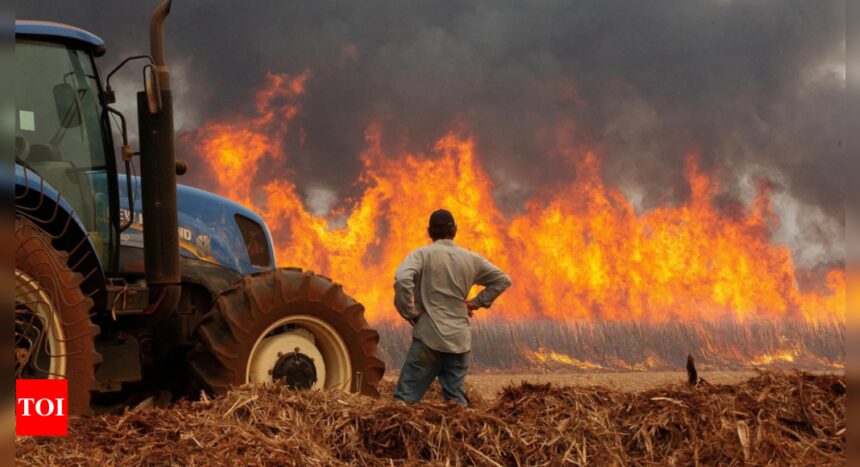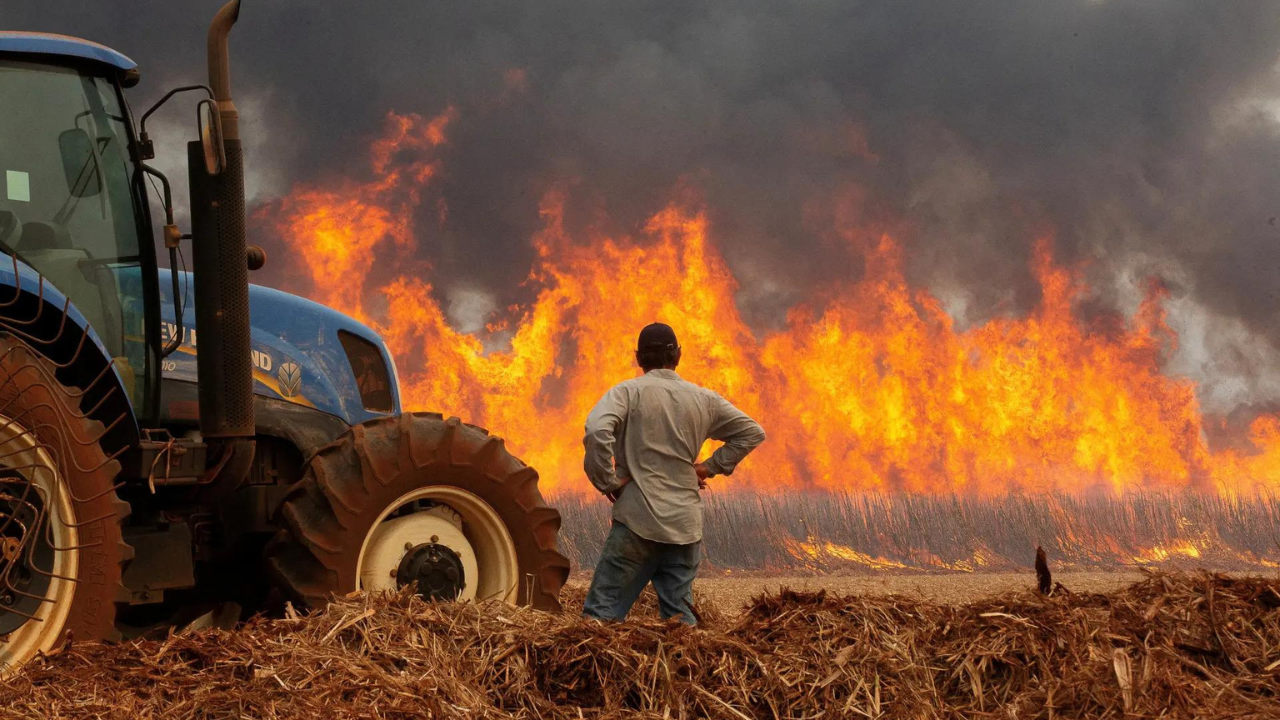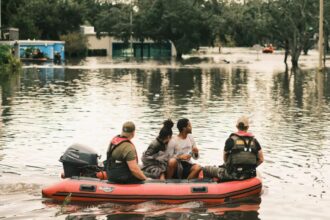Brazil is dealing with its most severe drought in over seven decades, with nearly 60 percent of the country severely affected. The prolonged dryness has caused Amazon basin rivers to hit extreme lows, while manmade wildfires have destroyed protected areas, worsening air quality to dangerous levels, according to Associated Press.
Nearly 160,000 fires have been reported across Brazil since the start of the year, making 2023 the worst year for wildfires in the country since 2010.The world’s largest wetland, Pantanal, has experienced its second-worst year for fires. Most of these fires are manmade, started to clear land for agriculture or pastures. An area the size of Italy has burned, so far this year.
“This is the first time that a drought has covered all the way from the North to the country’s Southeast,” said Ana Paula Cunha, a researcher at the National Center for Monitoring and Early Warning of Natural Disasters. “It is the most intense and widespread drought in history.”
The drought is fuelling uncontrolled fires, with smoke causing Sao Paulo to experience the second worst air quality globally, following only Lahore, Pakistan, according to Swiss air technology company IQAir.
Chapada dos Veadeiros, a popular national park in Brazil is being ravaged by wildfires. “This year, the dry season started much earlier than in previous years, whereas the rain season was intense yet short,” said park head Nayara Stacheski. “The wind is strong, the air humidity is very low and it’s extremely hot. All this worsens the wildfire.”
Firefighters are battling multiple blazes in Cerrado, one of Brazil’s few remaining savannah regions. While some fires have been controlled, others continue to threaten the park.
Low water levels in the Amazon and its tributaries, such as the Madeira River, have isolated communities that rely on river transport. In Fidadelfia, home to 387 Tikuna tribe families, residents are facing a major water and food shortage. “This used to be the Amazon River,” said local leader Myrian Tikuna. “Now it’s a desert. If things get worse, our people will disappear. Now we are realising the severity of climate change.”
The situation across Brazil continues to be severe with no significant rain expected until October.
Nearly 160,000 fires have been reported across Brazil since the start of the year, making 2023 the worst year for wildfires in the country since 2010.The world’s largest wetland, Pantanal, has experienced its second-worst year for fires. Most of these fires are manmade, started to clear land for agriculture or pastures. An area the size of Italy has burned, so far this year.
“This is the first time that a drought has covered all the way from the North to the country’s Southeast,” said Ana Paula Cunha, a researcher at the National Center for Monitoring and Early Warning of Natural Disasters. “It is the most intense and widespread drought in history.”
The drought is fuelling uncontrolled fires, with smoke causing Sao Paulo to experience the second worst air quality globally, following only Lahore, Pakistan, according to Swiss air technology company IQAir.
Chapada dos Veadeiros, a popular national park in Brazil is being ravaged by wildfires. “This year, the dry season started much earlier than in previous years, whereas the rain season was intense yet short,” said park head Nayara Stacheski. “The wind is strong, the air humidity is very low and it’s extremely hot. All this worsens the wildfire.”
Firefighters are battling multiple blazes in Cerrado, one of Brazil’s few remaining savannah regions. While some fires have been controlled, others continue to threaten the park.
Low water levels in the Amazon and its tributaries, such as the Madeira River, have isolated communities that rely on river transport. In Fidadelfia, home to 387 Tikuna tribe families, residents are facing a major water and food shortage. “This used to be the Amazon River,” said local leader Myrian Tikuna. “Now it’s a desert. If things get worse, our people will disappear. Now we are realising the severity of climate change.”
The situation across Brazil continues to be severe with no significant rain expected until October.
Source : Times of India









